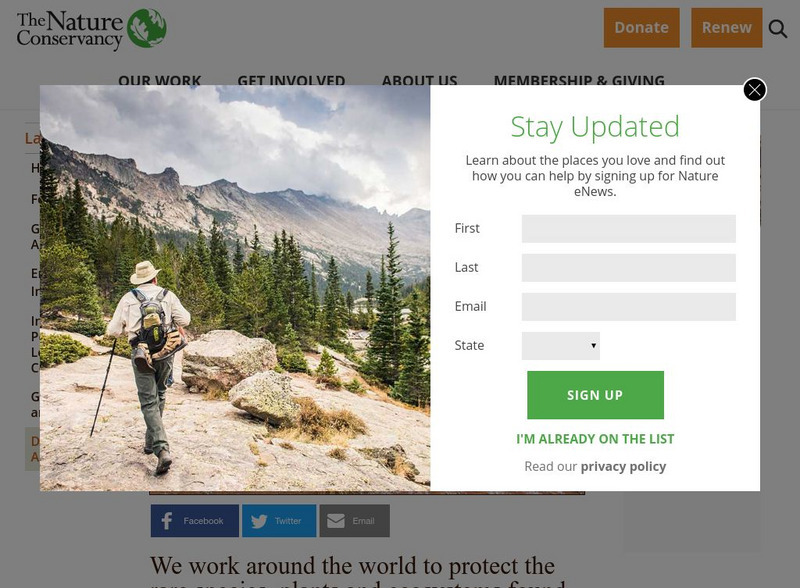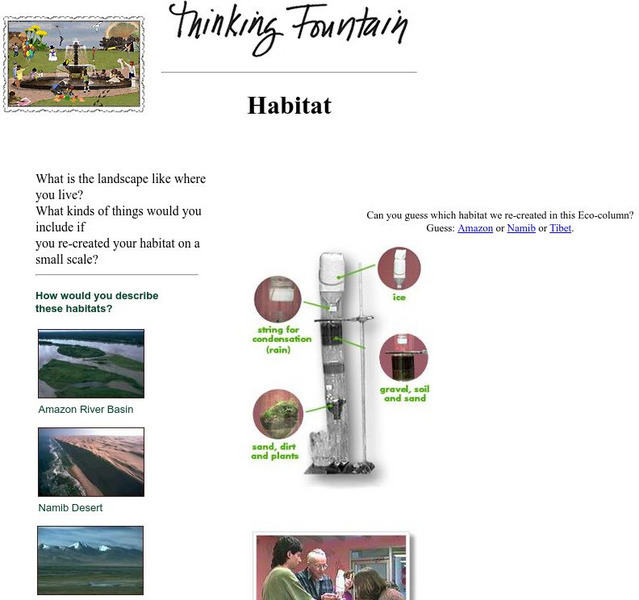Hi, what do you want to do?
Alabama Learning Exchange
Alex: At Home in a Biome
This lesson plan allows students to study and learn the names and characteristics of Earth's six major biomes. The biomes are introduced with a slideshow presentation. A paper-folding poster activity gives students the opportunity to...
Center for Educational Technologies
Earth Science Explorer: Tropical Savannah Biome
Discover the tropical savannah biome! Here you can learn what a tropical savannah is, where such places exist, and the animals and plants that can be found there.
Center for Educational Technologies
Earth Science Explorer: Taiga Biome: Plants
As part of a virtual museum visit, this site offers a look at the plants of the Taiga Biome. Content includes a look at plant adaptations.
Center for Educational Technologies
Earth Science Explorer: Taiga Biome
As part of a virtual museum exhibit, this site explores the taiga biome. Here you can learn what a taiga biome is, where you can find it, and the types of plants and animals that live there.
Ducksters
Ducksters: Science for Kids: Desert Biome
Kids learn about the desert biome. The dryest areas on Earth still have plant and animal life.
Ducksters
Ducksters: Science for Kids: Marine or Ocean Biome
Kids learn about the marine biome. The largest biome by far, the oceans cover most of the Earth's surface.
Ducksters
Ducksters: Science for Kids: Tropical Rainforest Biome
Kids learn about the tropical rainforest biome. This diverse ecosystem produces much of the Earth's biodiversity.
World Wildlife Fund for Nature
World Wildlife Fund: Our Earth: Ecoregions: Habitats: Grasslands
An introduction to the grasslands. Includes link to information about the types of animals that live in this habitat.
Nature Conservancy
Nature Conservancy: Planet Earth: Deserts and Aridlands
The desert areas in the United States that this organization is working to protect are portrayed through photographs and videos, showing the beauty of the landscapes and the diversity of life forms there.
Other
Greatest Places: Namib
Explore the Namib Desert and learn about its location, the Skeleton Coast, mirages, and general information about this home to the highest sand dunes in the world.
Science Museum of Minnesota
Science Museum of Minnesota: Thinking Fountain: Habitat
Explore the basics of a few habitats and then create an ecocolumn--a simulated cross-section of a biome such as a rain forest--with your own environment.
Other popular searches
- World Map Earth's Biomes
- Discovery of Earth's Biomes
- Earth's Biomes 3rd Grade
- Earth's Biomes 5th Grade
- The Earth's Land Biomes
- Earth's Biomes Tundra
- Smart Board Earth's Biomes
- Earth's Biomes Music
- World Map Earths Biomes
- Map Earth's Biomes
- Earth's Biomes Maps
- What Are Earths Biomes














